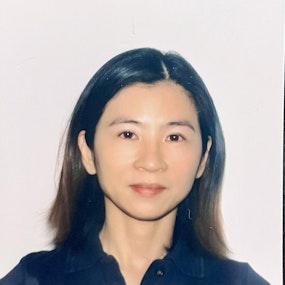ROBERT JOHNSON:
This is the award-winning Public Health Review Morning Edition for Friday, August 18, 2023. I'm Robert Johnson. Now, today's news from the Association of State and Territorial Health Officials.
WARREN VILLAGOMEZ:
We immediately shut down our borders and implemented measures that would protect the life and safety of CNMI residents.
JOHNSON:
states and territories continue to review their response to the pandemic. Warren Villagomez, with the Commonwealth Healthcare Corporation in the Northern Mariana Islands, says lessons learned from COVID-19 have helped inform planning for other public health emergencies.
VILLAGOMEZ:
So many planning efforts have been updated, you know, as well as revision on plans and stepping up coordination within the state and public health as well as the hospital for improvements, action plans, immediate triggers to protect the community.
JOHNSON:
Villagomez adds, everyone is more aware of the need to pay attention to official announcements.
VILLAGOMEZ:
That is the fortunate and evident that we saw throughout COVID as people were - were very aware, and very cognizant, when it comes to government notices, as well as warnings, you know, here in the CNMI, to step up and be aware and prepare themselves.
JOHNSON:
The pandemic, he says, has led to some much needed improvements that will help people in the future.
VILLAGOMEZ:
We notice and we - it's evident that, you know, all of this disaster pretty much paved the way of critical infrastructures being hardened and built upon to better protect and serve and provide better public safety and better healthcare to this community in the CNMI.
JOHNSON:
July was the hottest month on record for planet Earth. Arizona recently had its own record breaking heatwave. This is Hsini Lin with the Arizona Department of Health Services.
HSINI LIN:
So, we provide cooling centers, hydration stations, and then at the ADHS also provide heat alerts. We send out extreme heat safety messages, teach people how to stay safe on the hot days. And then we also have a heat-related illness dashboard that provides some syndrome - using syndromic surveillance data to get an idea about the heat [...]
JOHNSON:
Lin says Arizona's annual summer heat requires yearly planning.
LIN:
Every year, at the beginning of May, we have an annual extreme heat planning workshop. That's where we get everybody together, the local county health department, whoever can involve with the heat work, try to discuss what we can do for this year.
JOHNSON:
The State creates a map that shows locations of cooling centers, where people can go to escape blistering temperatures.
LIN:
So, for cooling centers, we have a cooling center map in electronic copy or hard copies. So, for those hard copies, we actually have people going out on the street, you just hand it over to people, especially where lots of people, they don't have residences. And then we tell them where cooling centers are.
JOHNSON:
You can see Arizona's interactive cooling center map using the link in the show notes.
Also today, are you looking for someone to speak at your next event? ASTHO can help! O'Keyla Cooper has more.
O'KEYLA COOPER:
Organizations looking for public health experts can connect with ASTHO's Speaker's Bureau. The platform offers a diverse pool of expert speakers ready to connect with your audience on important public health topics. It's as easy as completing a quick speaker request form. To explore the full list of speakers or to request a speaker, simply click the link in the show notes.
JOHNSON:
Finally, ASTHO reports the latest public health news here on this newscast each morning, and once a week, sends out even more news to those who've signed up for its Public Health Weekly email newsletter. You can join the list, just look for the link in the show notes.
And if you have a minute, please take the time to give us a review. We'd like to know what you think. That'll do it for today's newscast. We're back Monday morning with more ASTHO news and information. I'm Robert Johnson. You're listening to the award-winning Public Health Review Morning Edition. Have a great weekend.






